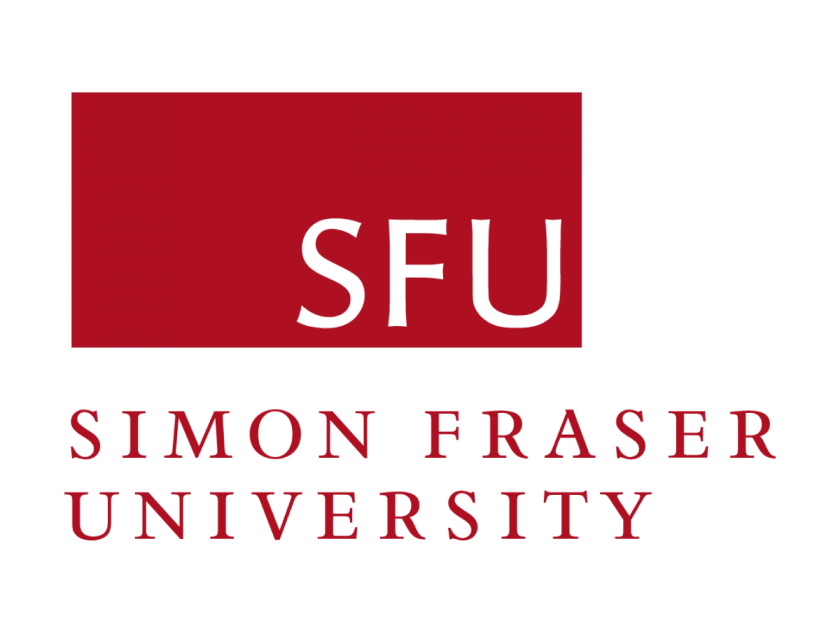The Reality of English Presentation Skills of English-majored Students in Vietnam
A Case Study at Van Lang University
DOI:
https://doi.org/10.54855/ijte.22222Keywords:
presentation, presentation skills, speaking skills, oral communication skills, English-majored studentsAbstract
Presentation skills play an indispensable role in undergraduates’ education and developing their future careers because this skill assists college students in accomplishing a superior knowledge base and enhancing their public speaking. The study aims to measure English-majored students' reality at the Faculty of Foreign Languages of Van Lang University in Vietnam about speaking skills, especially presentation skills. The quantitative study has been carried out among 600 second-year, third-year, and four-year students at the Faculty of Foreign Languages of Van Lang University in Vietnam. The results of the research paper demonstrated that most students were not confident about their presentation skills because of making mistakes about vocabulary usage, grammar, fluency, and so on when giving presentations. EFL lecturers can consider the results to improve their teaching methods regarding speaking skills and find out more strategies to solve students' speaking challenges.
References
Albino, G. (2017). Improving Speaking Fluency in a Task-Based Language Teaching Approach: The Case of EFL Learners at PUNIV-Cazenga. SAGE Open, 7(2), 1-11. https://doi.org/10.1177/2158244017691077
Al-Nouh, N. A., Abdul-Kareem, M. M., & Taqi, H. A. (2015). EFL College Students' Perceptions of the Difficulties in Oral Presentation as a Form of Assessment. International Journal of Higher Education, 4(1), 136-150. http://dx.doi.org/10.5430/ijhe.v4n1p136
Brown, H. D. (1994). Principles of language learning and teaching. Upper Saddle River, NJ: Prentice-Hall.
Bui, T. L. (2021). The Role of Collocations in the English Teaching and Learning. International Journal of TESOL & Education, 1(2), 99–109. Retrieved from http://i-jte.org/index.php/journal/article/view/26
Carver, C. S. (1994). Cognitive processes and self-regulation: Determinants of concentration and distraction. Applied Psychology: An International Review, 43(3), 387-391. https://doi.org/10.1111/j.1464-0597.1994.tb00834.x
Chandren, S., & Yaacob, A. (2016). Action research on enhancing accounting students’ oral presentation skill. International Review of Management and Marketing, 6(S7), 321-325.
Chang, Y., & Huang, H. (2015). Exploring TED Talks as a pedagogical resource for oral presentations: A corpus-based move analysis. English Teaching & Learning, 39(4), 29-62. DOI: 10.6330/ETL.2015.39.4.02
Chen, Y. Y., Chang, Y.-S., Lee, J.-Y., & Lin, M. H. (2021). Effects of a Video Featuring Connected Speech Instruction on EFL Undergraduates in Taiwan. SAGE Open, 11(2), 1–12. https://doi.org/10.1177/21582440211019746
Chuyen, N. T. H., Tra, T. T. T., & Trang, N. T. H (2020). Using ted talks to enhance presentation skill for 1st year english majors at thai nguyen university of education. TNU Journal of Science and Technology, 225(3), 181-188. https://doi.org/10.34238/tnu-jst.2020.03.1561
Crowther, D., Trofimovich, P., Isaacs, T., & Saito, K. (2015). Does a speaking task affect second language comprehensibility? The Modern Language Journal, 99(1), 80-95. https://doi.org/10.1111/modl.12185
Donohoe, A. (2020, April 11). Definition of a Powerpoint Presentation. Techwalla. Retrieved from https://www.techwalla.com/articles/definition-of-a-powerpoint-presentation
Dornyei, Z., & Clement, R. (2001). Motivational characteristics of learning different target languages: Results of a nationwide survey. Motivation and second language acquisition, 23, 399-432.
Dung, V. (2021, March 19). Kỹ năng thuyết phục cho sinh viên – Chìa khóa của sự thành công. Andrews University Business Scholarship. Retrieved from https://andrews.vn/ky-nang-thuyet-phuc/
Evans, S. (2013). “Just wanna give you guys a bit of an update”: Insider perspectives on business presentations in Hong Kong. English for Speaking Purposes, 32(4), 195-207. https://doi.org/10.1016/j.esp.2013.05.003
Fallows, S., & Steven, C. (2000). Building Employability Skills into the Higher Education Curriculum: A University-wide Initiative. Education + Training, 42(2), 75-83. https://doi.org/10.1108/00400910010331620
Girard, T., Pinar, M., & Trapp, P. (2011). An exploratory study of class presentations and peer evaluations: Do students perceive the benefits? Academy of Educational Leadership Journal, 15(1), 77-94.
Gray, F. E. (2010). Specific Oral Communication Skills Desired in New Accountancy Graduates. Business Communication Quarterly, 73(1), 40–67. https://doi.org/10.1177/1080569909356350
Horwitz, E. K., Horwitz, M. B., & Cope, J. A. (1986). Foreign language classroom anxiety. The Modern Language Journal, 70(2), 125-132. https://doi.org/10.1111/j.1540-4781.1986.tb05256.x
Indriani, S. (2020). Utilizing a recorded video to assess speaking and presentation skills of pre-service teachers. Scholaria: Jurnal Pendidikan dan Kebudayaan, 10(1), 60-65. https://doi.org/10.24246/j.js.2020.v10.i1.p60-65
Kim, S. (2006). Academic oral communication needs of East Asian international graduate students in non-science and non-engineering fields. English for Specific Purposes, 25(4), 479-489. https://doi.org/10.1016/j.esp.2005. 10.001
King, J. (2002). Preparing EFL Learners for Oral Presentations. The Internet TESL Journal, 8(3). Retrieved from http://iteslj.org/Lessons/King-PublicSpeaking.html
Kumar, Y. (2021, October 18). Oral Communication: Definitions, Importance, Methods, Advantages and Disadvantages. GetupLearn. Retrieved from https://getuplearn.com/blog/oral-communication/
Lam, W. Y. K. (2007). Tapping ESL learners’ problems and strategies in oral communication tasks: Insights from stimulated recall. Prospect, 22(1), 56-71. https://search.informit.org/doi/10.3316/aeipt.162847
Lu, Y., & Hsu, C. F. (2008). Willingness to communicate in intercultural interactions between Chinese and Americans. Journal of Intercultural Communication Research, 37(2), 75-88. doi:10.1080/17475750802533356
Melvina, M., & Alicia, D. (2016). Students’ problems in giving presentation a study at stkip pgri of west sumatera. Proceedings of ISELT FBS Universitas Negeri Padang, 4(2), 105-112.
Mukminin, A., Masbirorotni, M., Noprival, N., Sutarno, S., Arif, N., & Maimunah, M. (2015). EFL speaking anxiety among senior high school students and policy recommendations. Journal of Education and Learning, 9(3), 217-225.
Nakatani, Y. (2010). Identifying strategies that facilitate EFL Learners’ oral communication: A classroom study using multiple data collection procedures. The Modern Language Journal, 94(1), 116-136. https://doi.org/10.1111/j.1540-4781.2009.00987.x
Nakhalah, A. M. M. A. (2016). Problems and difficulties of speaking that encounter English language students at Al Quds Open University. International Journal of Humanities and Social Science Invention, 5(12), 96-101.
Nguyen, T. B. N. (2014). An investigation into the use of body language cues in presentations by English-majored freshmen at Vietnam University of Commerce (Doctoral dissertation, ĐHNN). Retrieved from http://repository.vnu.edu.vn/handle/VNU_123/41101
Osterman, G. L. (2014). Experiences of Japanese University Students’ Willingness to Speak English in Class: A Multiple Case Study. SAGE Open, 4(3), 1–13. https://doi.org/10.1177/2158244014543779
Pabro-Maquidato, I. M. (2021). The Experience of English Speaking Anxiety and Coping Strategies: A Transcendental Phenomenological Study. International Journal of TESOL & Education, 1(2), 45-64. Retrieved from http://i-jte.org/index.php/journal/article/view/32
Panggabean, C. I. T., & Triassanti, R. (2020, May). The implementation of metacognitive strategy training to enhance efl students oral presentation skill. English Education: Journal of English Teaching and Research, 5(1), 32-40. https://doi.org/10.29407/jetar.v5i1.14324
Radzuan, N. R. M. & Kaur, S. (2011). Technical oral presentations in English: Qualitative analysis of Malaysian engineering undergraduates' sources of anxiety. Procedia - Social and Behavioral Sciences, 29, 1436-1445. http://dx.doi.org/10.1016/j.sbspro.2011.11.383
Rosenzweig, G. (2021, February 11). What Is a Presentation? ClearVoice. Retrieved from https://www.clearvoice.com/blog/what-is-a-presentation/
Rumiyati, R., & Seftika, S. (2018, May). Anxiety of Speaking English in English Foreign Language (EFL) Class. Journal of English Education, Literature and Linguistics, 1(1), 46-61.
Russ, T. L. (2009). The Status of the Business Communication Course at U.S. Colleges and Universities. Business Communication Quarterly, 72(4), 395–413. https://doi.org/10.1177/1080569909349524
Salem, A. A. M. S. (2019). A Sage on a Stage, to Express and Impress: TED Talks for Improving Oral Presentation Skills, Vocabulary Retention and Its Impact on Reducing Speaking Anxiety in ESP Settings. English Language Teaching, 12(6), 146-160. https://doi.org/10.5539/elt.v12n6p146
Schmitt, N. (2014, December). Size and Depth of Vocabulary Knowledge: What the Research Shows. Language Learning, 64(4), 913-951. DOI: 10.1111/lang.12077
Trang, N. T. T. (2019). The reality of presentation skills of pedagogic students at donghai university. Tạp chí khoa học - đại học đồng nai, 13, 8-19. Retrieved from http://tapchikhoahoc.dnpu.edu.vn/UserFiles/Docs/TapChi/2019/So%2013/2.Nguyen%20Thi%20Thu%20Trang_9-19.pdf
Tsiplakides, I., & Keramida, A. (2009). Helping students overcome foreign language speaking anxiety in the English classroom: theoretical issues and practical recommendations. International Education Studies, 2(4), 39-44.
Ur, P. (2012). A course in English language teaching. Cambridge University Press.
Van Lang University (2020). Decision No.109/QĐ/VL-HĐT 18th, August, 2020 of Chairman of the Van Lang University’s Council about Educational Philosophy. Retrieved from https://en.vanlanguni.edu.vn/van-lang-university/education-philosophy-mission-core-values
Vitasari, P., Wahab, M. N. A., Othman, A., & Awang, M. G. (2010, May). A research for identifying study anxiety sources among university students. International Education Studies, 3(2), 189-196.
Whai, M. K. G., & Mei, L. L. (2015). Causes of academic oral presentation difficulties faced by students at a polytechnic in Sarawak. The English Teacher, 44(3), 132-142.
Wright, K. B. (2005). Researching Internet-based populations: Advantages and disadvantages of online survey research, online questionnaire authoring software packages, and web survey services. Journal of computer-mediated communication, 10(3), JCMC1034. https://doi.org/10.1111/j.1083-6101.2005.tb00259.x
Yashima, T. (2002). Willingness to communicate in a second language: The Japanese EFL context. The Modern Language Journal, 86(1), 54-66. https://doi.org/10.1111/1540-4781.00136
Yu, M. H., Reynolds, B. L., & Ding, C. (2021). Listening and Speaking for Real-World Communication: What Teachers Do and What Students Learn From Classroom Assessments. SAGE Open, 11(2), 1-8. https://doi.org/10.1177/21582440211009163
Downloads
Published
Issue
Section
License
Copyright (c) 2022 Pham Manh Tri, Nguyen Duong Nhu Quynh, Nguyen Thi Kim Chi, Nguyen Hoang Ngoc Mai, Hoang Tran Anh Tien, Pham Vu Phi Ho

This work is licensed under a Creative Commons Attribution 4.0 International License.
The copyright of all articles published in the International Journal of TESOL & Education (ijte) remains with the Authors, i.e. Authors retain full ownership of their article. Permitted third-party reuse of the open access articles is defined by the applicable Creative Commons (CC) end-user license which is accepted by the Authors upon submission of their paper. All articles in the ijte are published under the CC BY-NC 4.0 license, meaning that end users can freely share an article (i.e. copy and redistribute the material in any medium or format) and adapt it (i.e. remix, transform and build upon the material) on the condition that proper attribution is given (i.e. appropriate credit, a link to the applicable license and an indication if any changes were made; all in such a way that does not suggest that the licensor endorses the user or the use) and the material is only used for non-commercial purposes.
Authors retain copyright and grant the journal the right of first publication with the work simultaneously licensed under a Creative Commons Attribution 4.0 International License that allows others to share the work with an acknowledgment of the work's authorship and initial publication in this journal.
Authors are able to enter into separate, additional contractual arrangements for the non-exclusive distribution of the journal's published version of the work (e.g., post it to an institutional repository, in a journal or publish it in a book), with an acknowledgment of its initial publication in this journal.











